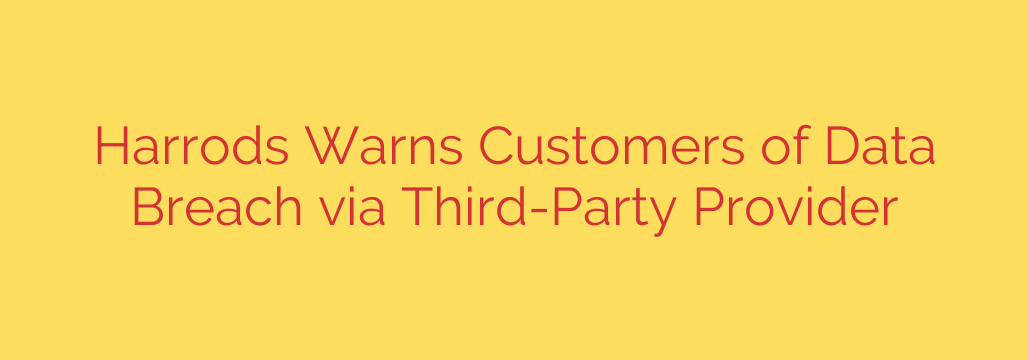
Harrods Data Breach: What Customers Need to Know and How to Stay Safe
The renowned luxury retailer Harrods has recently begun notifying customers about a data breach that occurred through one of its third-party service providers. While Harrods’ own internal systems were not compromised, the incident exposed the personal information of some of its customers, highlighting the growing security risks associated with interconnected digital services.
This security event serves as a critical reminder that our personal data is only as secure as the weakest link in the chain. Here is a breakdown of what happened, what information was affected, and the essential steps you should take to protect yourself.
What Happened in the Harrods Security Incident?
The data exposure did not originate from a direct attack on Harrods’ core infrastructure. Instead, the breach occurred at a third-party company that Harrods uses for specific services. This type of incident, often called a supply-chain attack, is increasingly common. Attackers target smaller, sometimes less secure, vendors to gain access to the data of the larger organizations they serve.
Upon discovering the breach, Harrods took action to secure the data and launched an investigation to understand the full scope of the incident. The company is now in the process of directly contacting all affected individuals.
What Customer Information Was Exposed?
According to the notifications being sent, the compromised data is believed to be limited in scope. It’s crucial to understand what was, and was not, exposed.
The information involved in this breach may include:
- Customer names
- Email addresses
- Details of past purchases or interactions
Most importantly, Harrods has stated that no financial information, such as credit card numbers, or account passwords were compromised in this incident. This significantly reduces the immediate risk of financial theft or direct account takeovers. However, the exposure of names and email addresses still presents serious security risks.
The Primary Risk: Sophisticated Phishing Scams
Even without passwords or financial data, criminals can leverage the stolen information to launch highly convincing attacks. With your name, email address, and potentially your purchase history, scammers can craft personalized phishing emails that look incredibly legitimate.
These fraudulent emails might:
- Appear to be from Harrods, referencing a recent (or fake) order.
- Ask you to click a link to “verify your account” or “update your details” due to the breach.
- Offer a special discount or gift card as an apology for the incident.
- Contain malicious attachments disguised as receipts or shipping notifications.
The goal of these scams is to trick you into revealing more sensitive information, such as your account password, credit card details, or other personal data on a fake website.
Actionable Steps: How to Protect Yourself Now
If you are a Harrods customer, whether you have received a notification or not, it is wise to take the following proactive security measures immediately.
Be Extremely Vigilant with Emails: Scrutinize any email claiming to be from Harrods. Look for generic greetings, spelling errors, and unusual sender addresses. Do not click on links or download attachments from unsolicited emails. If you need to check on an order or your account, navigate directly to the official Harrods website by typing the address into your browser.
Secure Your Harrods Account Password: While passwords were not exposed in this breach, it is an excellent opportunity to strengthen your account security. Log in to your Harrods account on the official site and create a new, unique, and strong password. Avoid reusing passwords across different websites.
Enable Two-Factor Authentication (2FA): If available, enable two-factor authentication on your Harrods account and other important online accounts (especially email). 2FA adds a critical layer of security by requiring a second verification step, such as a code sent to your phone, making it much harder for anyone to gain unauthorized access.
Monitor Your Accounts: Keep an eye on your bank and credit card statements for any unusual activity. While financial data was not part of this breach, it’s a good general security practice.
In an era of interconnected services, vigilance is our best defense. By understanding the risks and taking these simple but effective steps, you can help safeguard your personal information from those who would exploit it.
Source: https://securityaffairs.com/182752/data-breach/harrods-alerts-customers-to-new-data-breach-linked-to-third-party-provider.html








